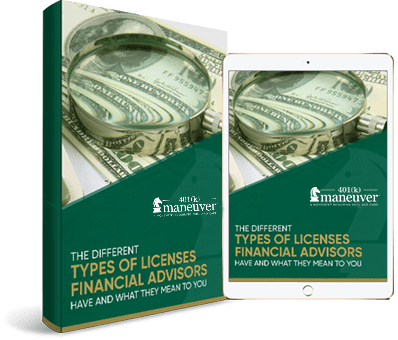
12 Ways to Teach Kids About Investing
Parents dream about the day their little ones will spread their wings and leave the house…and not return.
But that empty nest won’t happen unless kids are taught how to manage money correctly – that includes teaching kids about investing.
This isn’t something to hope and pray they learn in school.
According to a CNBC report, “Research shows that kids who learn to manage money when they’re young will be able to better handle their finances as adults. Yet, up until recently, only 17 states required high school students to take a class in personal finance.”¹
Moreover, a Nitro survey of 1000 millennials’ perceptions of the public school system found the following:
- 84% of respondents feel high school did not prepare them to handle their personal finances.
- 3 out of 4 respondents feel personal finance courses should be mandatory as a result.
- Specifically, 68% of respondents feel the stock market and investing basics should be taught to high school students.²
Unfortunately, the reason so many millennial parents feel personal financial courses should be mandatory in public school is because their own parents did not teach them.
A CreditCards.com study found that only 1 in 4 U.S. adults were taught any money lessons from their parents growing up and only 22% of those received lessons about investing money.³
Before we move on, give yourself a pat on the back.
Just researching ideas to teach kids about investing shows you are doing better than most parents. (Not that it’s a competition, but Bravo!)
The good news is that there are numerous ways to teach kids about investing.
And the best part is that as you discover ways to teach kids about investing, it becomes an opportunity to learn and grow together.
#1 Teach Kids About Money Basics First

Before you teach kids about investing, they need to understand the basics of money management. Specifically, how to make money and what to do with it once they earn it.
This means explaining how you pay bills and save for emergencies. It also includes teaching your kids about bank accounts and credit cards. Kids can’t move on to investing until they understand these basics.
[Related Read: 17 Easy Ways to Teach Kids about Money]
#2 Allow Kids to Earn Money

One of the best ways to learn is to do. Therefore, your kids need to have money to invest. Provide opportunities for your kids to earn money. Don’t simply give them cash. Instead, let them earn an allowance for doing chores around the house or set up a lemonade stand in the front yard. Not only does this help them better understand the value of money, but it may also instill in them a work ethic that will help them later in life.
#3 Point Out False Money Assumptions

A major reason kids (and many of us adults) have a skewed understanding of money is because we live in a society that encourages constant consumption.
Kids see other kids at school, the neighbors, Instagram influencers, and others on social media posting pictures of fancy cars, closets, and vacations.

Parents need to point out these types of false money assumptions and suggest not all is as it seems — as we don’t always know how people are paying for things. For example, they may be racking up credit card debt to purchase that new bike or living way beyond their means.
Encourage your kids to focus on growing their own wealth instead of making assumptions about money in someone else’s pocket.
#4 Start Investing When They are Young

Studies show “66% of people aged 18 to 29 (and 65% of those 30 to 39) say investing in the stock market is scary or intimidating.”⁴
Help your kids avoid stock market intimidation by introducing them to investing at an early age. Simply taking time to teach kids about investing takes away some of the fear.
Take it to the next level and allow your kids to invest in stocks when they are young. The legal minimum age to buy stocks varies from state to state, so make sure you do your research beforehand.
When your kids get their first part-time summer job, let them keep the money, but help them open up a Roth IRA (Individual Retirement Account).
To open and contribute to a Roth IRA, there are specific rules. These include…
- The individual must be working and bring home earned income.
- You can contribute the amount of their earned income, up to the $6,000 contribution limit.
- No money can be withdrawn until the individual is 59 ½ years old.
Each time a statement arrives, sit down with your kid and review his/her progress.
#5 Show Examples

Possibly one of the smartest things parents can do for their kids is fund a 529 tax-advantaged account for their schooling.
Earnings in the 529 plan grow tax-free over time. The younger your child is when the account is opened, the more funds can be contributed, which means greater earnings.
Another reason it is smart is because it provides a tangible example for kids. Show your kids the statements from the 529 plan so they can see how the money multiplies over time.
If the 529 plan yields enough for college, this is a wonderful real-life example of investing that your teen will appreciate and take into the future. Whenever possible, show your kids examples of investing in real life.
#6 Include Kids in Investment Conversations

Another way to teach kids about investing is to include them in the conversation. If you are researching investment options, discuss them in front of your kids.
Let them hear you use investment terminology, such as stocks, portfolios, bonds, and interest rates. When they are old enough and have a basic understanding of investing, let them help you choose which stocks to invest in.
#7 Discuss the Difference Between Saving and Investing

When kids are taught financial basics, parents tend to cover spending and saving first. However, kids may confuse saving and investing. It’s important for parents to explain the difference.
Savings is a safe bet and a necessary category of money management. Investing involves taking risks with money. However, savings does not equate to growth as investing does.
#8 Give Real-Life Risk and Reward Examples

Use real-life examples to drive home the point of risk and reward when you teach kids about investing.
For example, tell your child she can have 1 piece of chocolate now, or she can have 2 pieces of chocolate if she waits until after dinner. If she takes a risk and is patient, she will earn more chocolate.
It’s a hard challenge for kids, but it teaches how rewards work overtime.
#9 Play Kid-Friendly Stock Market Games

Make investing fun with stock market games designed for kids.
The Securities Industry and Financial Markets Association (SIFMA) Foundation created an online Stock Market Game where kids get $100,000 in virtual money to manage and invest. It also includes lessons for kids.⁵
Another cool game is Build Your Stax. In this virtual game, kids have 20 years to grow their wealth as much as they can. The game takes them through 20 imaginary years where they make financial decisions, such as savings, investing, and life transitions (like marriage).⁶
#10 Create a Mock Investment Portfolio

Allow your kids to play around with Marketwatch Virtual Stock Exchange.⁷
This is free software that lets users create investment portfolios. The good news is, it does not require you to make any real investments.
Your kid can build a mock investment portfolio based on his interests, such as McDonald’s, NASCAR, and Disney. Once the mock portfolio is created, he can watch it change in real life.
#11 Make Investing Routine

Make it a habit for kids to put a percentage of any money they earn or are given into the following categories:
- Spending
- Saving
- Giving
- Investing
If you make investing part of your child’s financial routine, it will be second nature.
#12 Take Advantage of Kid-Friendly Apps for Investing

Several effective tools make it easy for kids to begin investing, such as Greenlight.
The Greenlight Debit Card is a digital banking service for kids that connects to a parent’s bank account.⁸
The debit card automatically deposits the funds into savings, giving, and spending according to the percentages parents set. Recently, the popular kid-friendly banking service added investing to its platform, which allows kids 10 and older to research and invest in stocks with parental supervision.
BusyKid is another app that allows kids to use their allowance money to purchase real stock.⁹
Both are safe platforms that make it easy to teach kids about investing.
We regularly post videos with financial information and updates. Check us out on YouTube.
Sources:
- https://www.cnbc.com/2020/02/04/teaching-financial-education-in-schools-finally-catches-on.html
- https://www.nitrocollege.com/research/remake-the-school-system
- https://www.creditcards.com/credit-card-news/children-allowance-poll/#methodology
- https://www.forbes.com/sites/andreacoombes/2018/03/13/millennials-are-good-at-saving-but-investing-not-so-much/?sh=a5415377266b
- https://www.stockmarketgame.org/expstudent.html
- https://buildyourstax.com/
- https://www.marketwatch.com/game
- https://www.greenlightcard.com/plans
- https://busykid.com/








